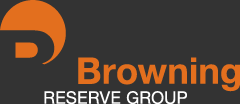The Benefits Of A Reserve Study
BY ROBERT W. BROWNING, PCAM, RS
With the arrival of spring, managers and board members fancifully dream of budgets, reserve studies and disclosures. Oh I wish. As a Reserve Specialist (RS) who works year round on reserve studies, I know the season for planning is really fall for most associations, as they have calendar fiscal year ends. However, it’s never too early to start with the reserve study process.
But first, why do a reserve study? Two very important reasons: It’s the law and it makes good business sense.
California Civil Code Sections 1365 and 1365.5 require most associations to have a reserve study performed every three years which includes a visual inspection of the accessible common areas. The board is required to review this study and provide a summary to the association members with the annual budget packet. Starting in 2005, the board is also responsible for a new disclosure to be distributed to the members with the budget packet. It is called the California Assessment and Reserve Funding Disclosure Summary. This two page disclosure has several statements describing the state of the association’s reserve funding status as well as other statements regarding the implementation of actual or potential special assessments and bank loans. Unfortunately, this disclosure can only be executed with a currently updated reserve study so the three year requirement has subliminally been shortened to a yearly requirement (although there is no requirement for a site visit or inspection.)
The other reason to have a reserve study is that it makes good business sense. Even very small associations are multi-million dollar corporations when you look at the value of the homes located within the community. Combine that with the value of the common areas and the board of directors have a fiduciary responsibility to ensure the association has a plan for the future that has as few surprises for the members as possible. The reserve study should be used as a tool for not only planning future reserve component replacements, but also for the coordination of other less tangible things, such as integrating paint colors with roofing material compositions.
So now you have a reserve study and you update it annually and have a physical inspection every three years, what else should you do with it? Plenty, and here are some examples:
- The treasurer should refer to it often. In the winter or early spring, look at what work is proposed for this year. Test the RS recommendation. Does it still need to be done? Has the scope of work changed? Get bids for the work. Make sure the work is planned in conjunction with other work that may be due. Notify homeowners of the work to be done, so they may plan to not have events at their home when say for example, paving of the streets is planned. The manager will work with the treasurer and other board members to coordinate all of this and I’ve only scratched the surface.
- The treasurer (and other board members,) should have a sense of when reserve items are planned so they can communicate to the members during meeting open forums. Many times I have seen homeowners ask the board: “When is my home to be painted?” The board looks professional when they can point to the reserve study and answer the question. It takes the heat off of the board if the homeowner does not like the answer. “Hey it’s the RS fault!” Finally, maybe the homeowner can share with the board why the schedule may need revising.
- At budget time, the treasurer and manager will refer to the reserve study to plug the next year’s reserve contribution into the budget. This is after all, the main reason a reserve study was done.
- Also at budget time, the manager and board will review the assessment and reserve disclosures prepared by the RS and make sure the board agrees with what they say as the board is ultimately responsible for their content. Most RS’s prepare the disclosures as a courtesy.
- At the end of the fiscal year, the reserve study is give to the auditor and tax preparer for inclusion into the association’s compilation, review or audit.
The board of directors and management should refer to the reserve study frequently and make notes throughout the year so at update time, thoughtful revisions can be incorporated into the study. The best reserve study is a collaboration between the board of directors, management and the reserve specialist. Working together we can all ensure that the best possible study is being done on behalf of the ultimate consumer of the process: the association member.
Community association management is fueled by the guiding principle of “maintain and enhance the value of the asset.” A reserve study is one step in this journey that usually starts in the fall, but can, and many times does, start in the spring.
Spring 2008
This article may be reproduced with permission of the Browning Reserve Group. Does your association need an article for their newsletter? Maybe we can help. Give us a call at (877) 708-0600 Toll Free.
Copyright © Browning Reserve Group 1999-2021. All rights reserved.
